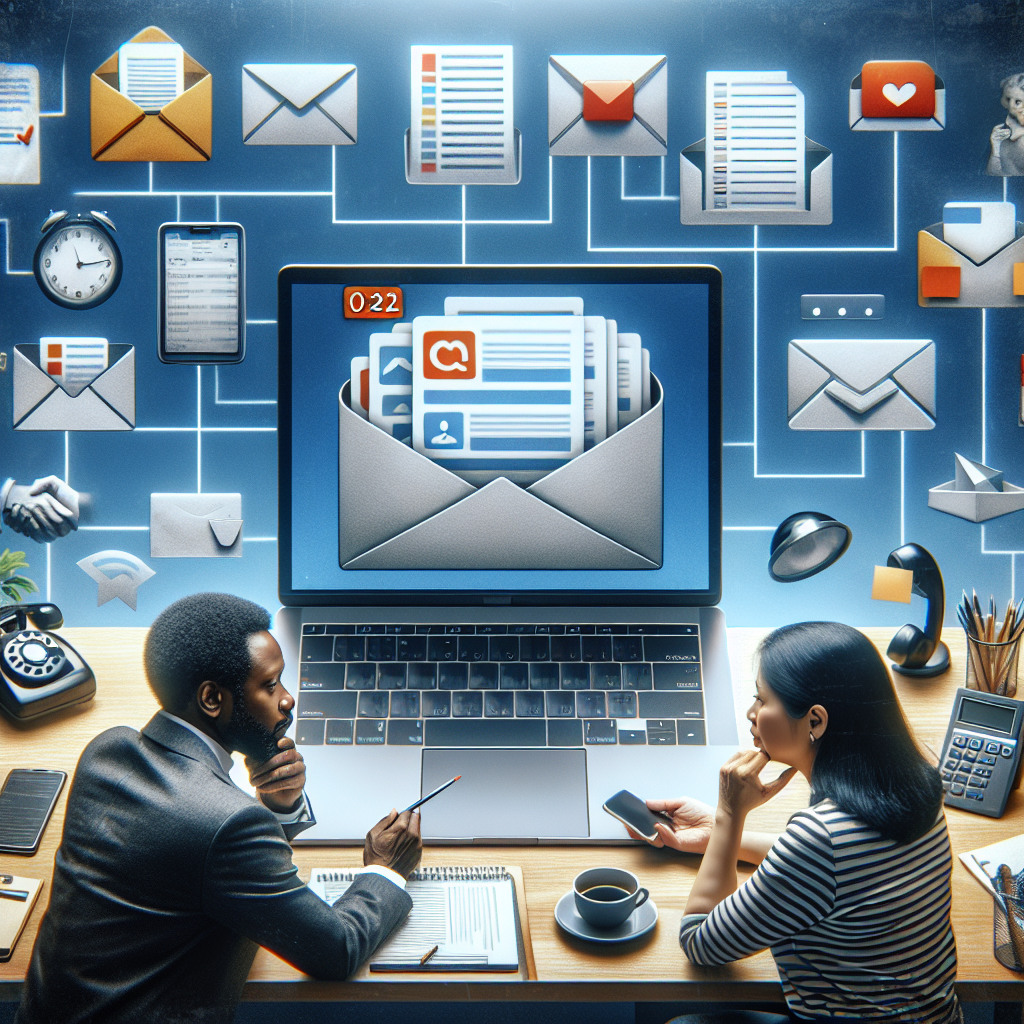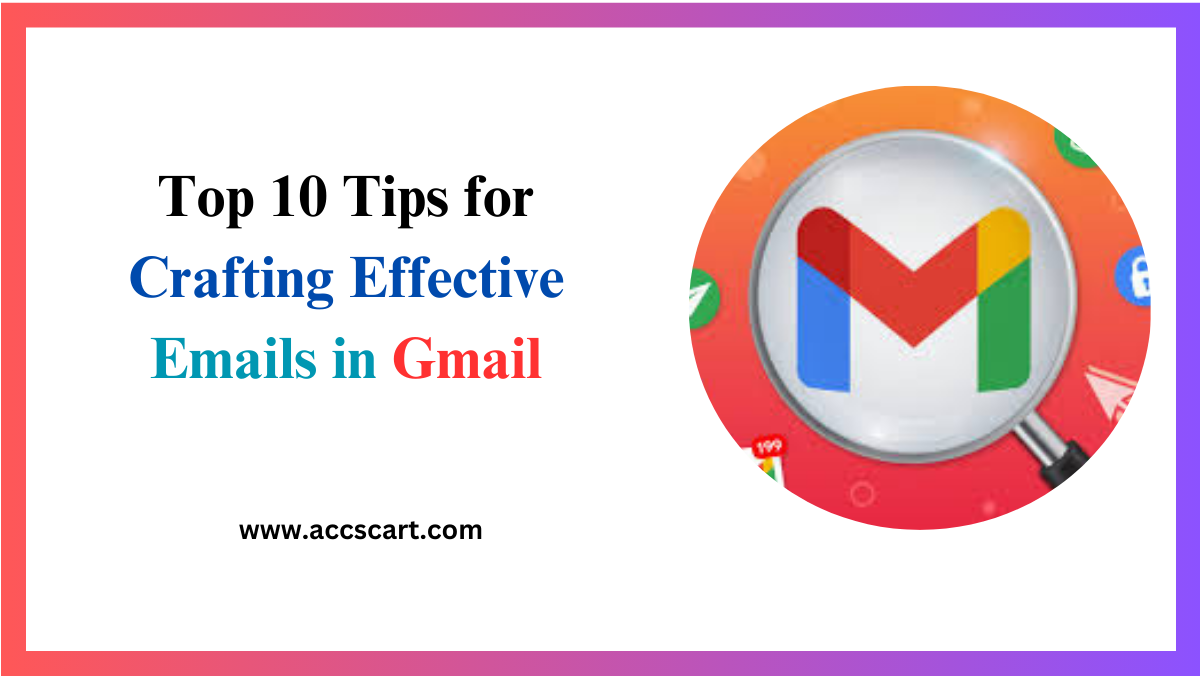In today’s digital age, emails are a critical part of our daily communication. Whether you’re reaching out to a potential client, coordinating with a team member, Effective Emails in Gmail or following up on a job application, crafting effective emails is essential. But with the sheer volume of emails we send and receive, how do you ensure your message stands out and gets the response you need? This guide will show you how to master email writing using Gmail, with practical tips and techniques that anyone can follow.
The Importance of Effective Email Communication
In a world where emails are a primary mode of communication, mastering the art of email writing is crucial. Effective emails can enhance your professional image, Effective Emails in Gmail foster better relationships, and drive desired actions. Whether you’re a small business owner looking to purchase Gmail accounts for your team or an individual aiming to improve your communication skills, understanding the nuances of email writing is beneficial.
Emails serve as a reflection of your professionalism and attention to detail. A well-crafted email can leave a lasting impression on the recipient, increasing the likelihood of a positive response. On the contrary, poorly written emails can damage your credibility and lead to misunderstandings.
Furthermore, effective email communication can save time and minimize back-and-forth exchanges. By clearly conveying your message and expectations, you can ensure that your emails are concise, impactful, and prompt timely responses.
Structuring Your Emails Properly
One of the key aspects of crafting effective emails is structuring them properly. Effective Emails in Gmail A well-structured email is easy to read and understand, making it more likely to achieve its purpose. Here are some tips for structuring your emails:
1. Start with a Clear Purpose
Begin your email by clearly stating its purpose. This helps the recipient understand the context and urgency of your message right from the start. For example, if you’re reaching out to inquire about purchase Gmail accounts, mention it in the opening lines.
2. Use Paragraphs and Headings
Break your email into paragraphs and use headings to organize the content. Effective Emails in Gmail This makes it easier for the recipient to skim through and find the relevant information quickly. Each paragraph should focus on a single point or idea, making the email more digestible.
3. Include a Clear Conclusion
End your email with a clear conclusion or call to action. Summarize the main points and specify what you expect from the recipient. Whether it’s scheduling a meeting, providing feedback, or completing a task, make your expectations explicit.

Using Clear Subject Lines
The subject line is the first thing the recipient sees, and it plays a crucial role in determining whether your email gets opened or ignored. A clear, concise, and relevant subject line can significantly increase your email’s open rate. Here are some tips for crafting effective subject lines:
- Be Specific and Relevant
Your subject line should give the recipient a clear idea of what the email is about. Avoid vague or generic subject lines that don’t convey the purpose of your message. For instance, instead of “Important Update,” use “Meeting Rescheduled to Friday at 3 PM.”
- Keep It Short and Sweet
Aim for subject lines that are brief and to the point. Long subject lines can get cut off, Effective Emails in Gmail especially on mobile devices, making them less effective. Try to keep your subject line under 50 characters, ensuring it conveys the main point succinctly.
- Use Keywords Wisely
Incorporate relevant keywords naturally into your subject line to improve its visibility in the recipient’s inbox. For example, if you’re emailing about a Gmail feature, include “Gmail” in the subject line. This helps the recipient identify the email’s relevance quickly.
Adding Call-to-Actions
A call-to-action (CTA) is a crucial element of any email, as it guides the recipient on what steps to take next. Whether it’s clicking a link, responding to a query, or scheduling a meeting, a clear and compelling CTA can drive the desired action. Here are some tips for adding effective CTAs to your emails:
- Be Clear and Direct
Your CTA should be clear and direct, leaving no room for ambiguity. Use action-oriented language that tells the recipient exactly what you want them to do. For example, instead of saying Effective Emails in Gmail “Learn More,” use “Click Here to Learn More.”
- Make It Stand Out
To ensure your CTA doesn’t get overlooked, make it stand out visually. You can use bold text, different colors, or even buttons to draw attention to the CTA. However, don’t overdo it—ensure it aligns with the overall tone and design of your email.
- Provide a Sense of Urgency
Creating a sense of urgency can encourage the recipient to take action promptly. Phrases like “Limited Time Offer” or “Respond by Friday” Effective Emails in Gmail can motivate the recipient to act quickly. Just ensure the urgency is genuine and not overused.
Proofreading Before Sending
No matter how well-written your email is, grammatical errors and typos can undermine its effectiveness. Proofreading your email before sending it is a critical step to ensure it is polished and professional. Here are some tips for effective proofreading:
- Take a Break Before Proofreading
After writing your email, take a short break before proofreading it. Effective Emails in Gmail This allows you to approach the email with fresh eyes, making it easier to spot errors.
- Read Aloud
Reading your email aloud can help you catch mistakes that you might miss when reading silently. It also allows you to assess the flow and tone of your email, ensuring it sounds natural and coherent.
- Use Grammar and Spelling Tools
Utilize grammar and spell-check tools to identify and correct errors. Tools like Grammarly can be integrated with Gmail to provide real-time suggestions and corrections, ensuring your email is error-free.
Personalizing Your Emails
Personalization can significantly enhance the effectiveness of your emails. Effective Emails in Gmail By tailoring your message to the recipient, you can make your email more engaging and relevant. Here are some tips for personalizing your emails:
- Use the Recipient’s Name
Addressing the recipient by their name can make your email feel more personal and less generic. It creates a sense of connection and shows that you value the recipient as an individual.
- Reference Previous Interactions
If you have had previous interactions with the recipient, reference them in your email. This shows that you remember your past conversations and are genuinely interested in building a relationship.
- Tailor the Content
Tailor the content of your email to the recipient’s interests, needs, or preferences. Effective Emails in Gmail For example, if you’re emailing a customer about a product they recently purchased, mention how the product can benefit them specifically.
Keeping It Concise
In the fast-paced digital world, people appreciate concise and to-the-point emails. Effective Emails in Gmail Long-winded emails can overwhelm the recipient and reduce the likelihood of a response. Here are some tips for keeping your emails concise:
- Focus on the Main Points
Identify the main points you want to convey and focus on them. Avoid adding unnecessary details or information that doesn’t contribute to the purpose of your email.
- Use Bullet Points
Bullet points can help break down complex information into easily digestible chunks. They make your email more scannable and help the recipient quickly grasp the key points.
- Edit Ruthlessly
After writing your email, review it and cut out any redundant or irrelevant content. Effective Emails in Gmail Aim to make each sentence count and ensure that every word serves a purpose.
Using Professional Language
The language you use in your emails reflects your professionalism and credibility. Using appropriate language can make your email more persuasive and respectful. Here are some tips for using professional language:
- Avoid Slang and Jargon
Avoid using slang, jargon, or overly casual language in your emails. Instead, opt for clear and straightforward language that is easy to understand.
- Be Polite and Respectful
Always be polite and respectful in your emails, regardless of the context. Use phrases like “please,” “thank you,” and “I appreciate” to convey politeness and gratitude.
- Maintain a Positive Tone
Maintain a positive and upbeat tone in your emails. Effective Emails in Gmail Even if you’re addressing a problem or delivering bad news, try to frame it in a constructive and optimistic manner.
Incorporating Visual Elements
Visual elements like images, videos, and infographics can enhance the appeal and effectiveness of your emails. They can help convey information more engagingly and memorably. Effective Emails in Gmail Here are some tips for incorporating visual elements:
- Use Relevant Images
Use relevant and high-quality images that complement your message. Effective Emails in Gmail Avoid using stock photos that look generic or unrelated to your content.
- Embed Videos
Embedding videos in your emails can make them more dynamic and engaging. Videos can be used to explain complex concepts, demonstrate products, or share testimonials.
- Include Infographics
Infographics are a great way to present data and statistics visually. They can make complex information more accessible and easier to understand.
Testing Your Emails
Testing your emails before sending them to a large audience can help identify potential issues and improve their effectiveness. Here are some tips for testing your emails:
- Send Test Emails
Send test emails to yourself or a colleague to see how they appear in different email clients and devices. Check for formatting issues, broken links, and other errors.
- A/B Testing
A/B testing involves sending two versions of an email to different segments of your audience to see which one performs better. You can test different subject lines, CTAs, and content to optimize your emails.
- Analyze Feedback
Analyze feedback from your test emails to identify areas for improvement. Use this feedback to refine your emails and make them more effective.
Analyzing Email Performance
Analyzing the performance of your emails can provide valuable insights into what works and what doesn’t. Here are some tips for analyzing email performance:
- Track Key Metrics
Track key metrics like open rates, click-through rates, and conversion rates to measure the effectiveness of your emails. These metrics can help you understand how well your emails are performing.
- Identify Trends
Identify trends in your email performance over time. Look for patterns that indicate what types of emails resonate with your audience and what areas need improvement.
- Make Data-Driven Decisions
Use the data from your email performance analysis to make informed decisions. Adjust your email strategy based on the insights you gain to continually improve your results.
Conclusion
Mastering the art of emailing is essential for effective communication in today’s digital world. By following these tips, you can craft emails that are clear, concise, and impactful. Whether you’re a small business owner looking to purchase Gmail accounts or an individual aiming to improve your email writing skills, these strategies can help you achieve your goals.
Remember, the key to successful email communication is to focus on the recipient’s needs and preferences. By personalizing your emails, using clear subject lines, and incorporating visual elements, you can create emails that stand out and drive the desired action.
Start implementing these tips today and see the difference they can make in your email communication. And if you’re looking for a reliable and efficient email platform, consider buying Gmail accounts to enhance your email experience.









